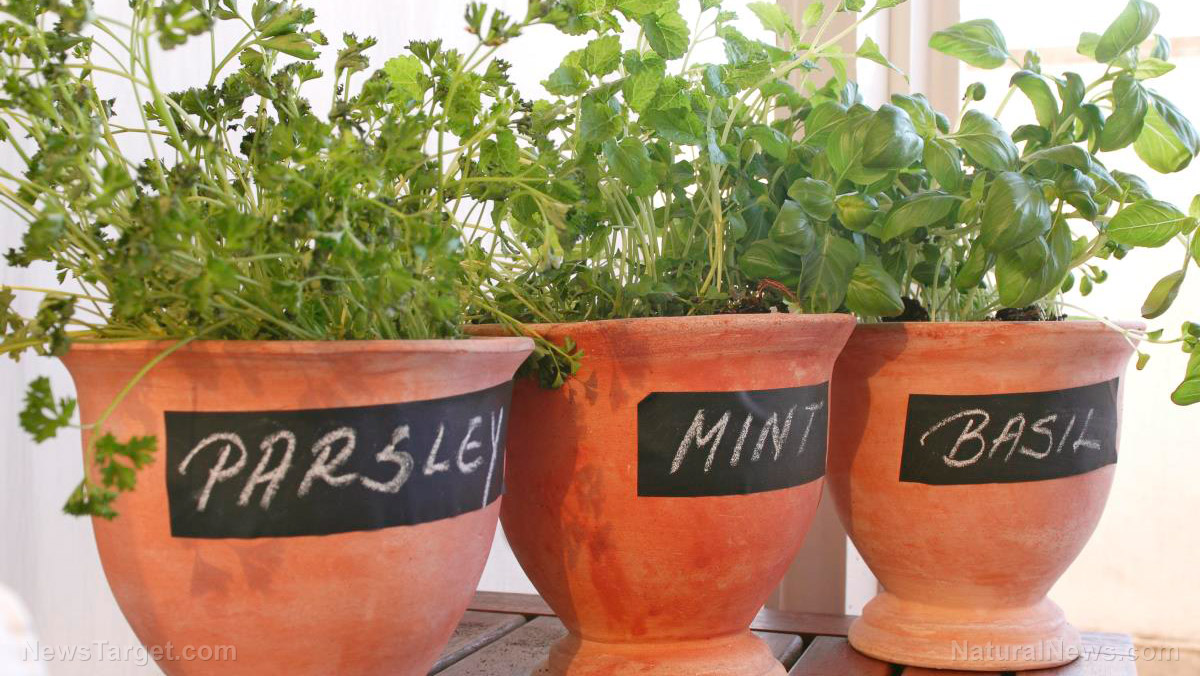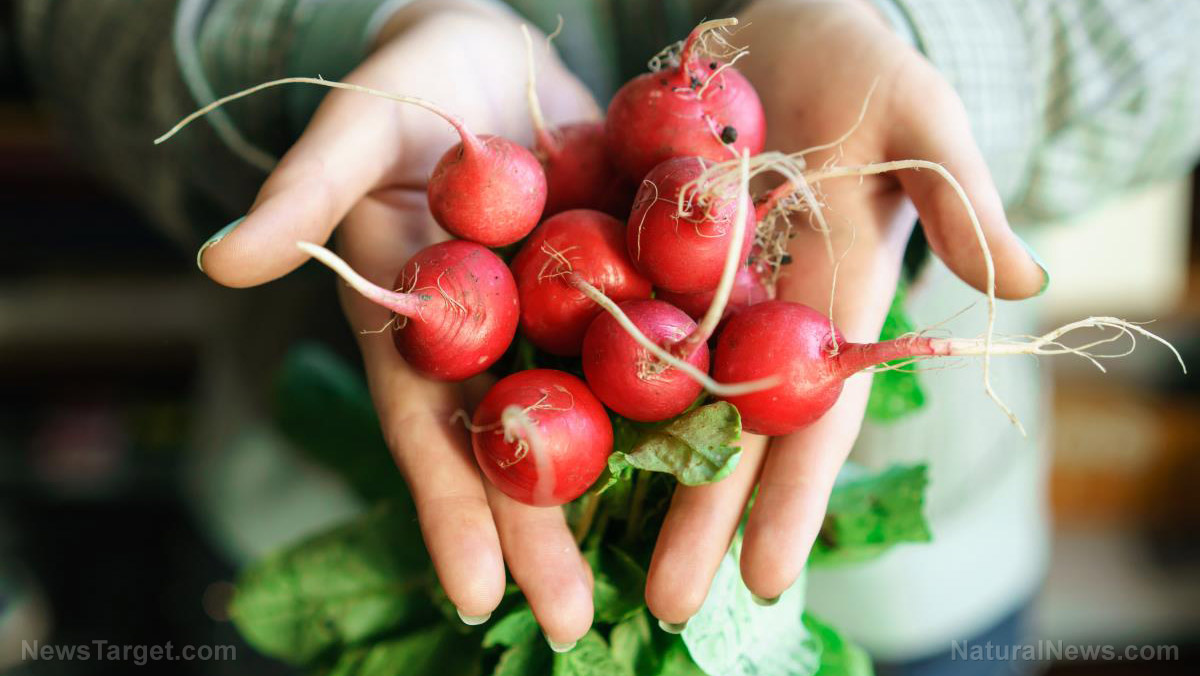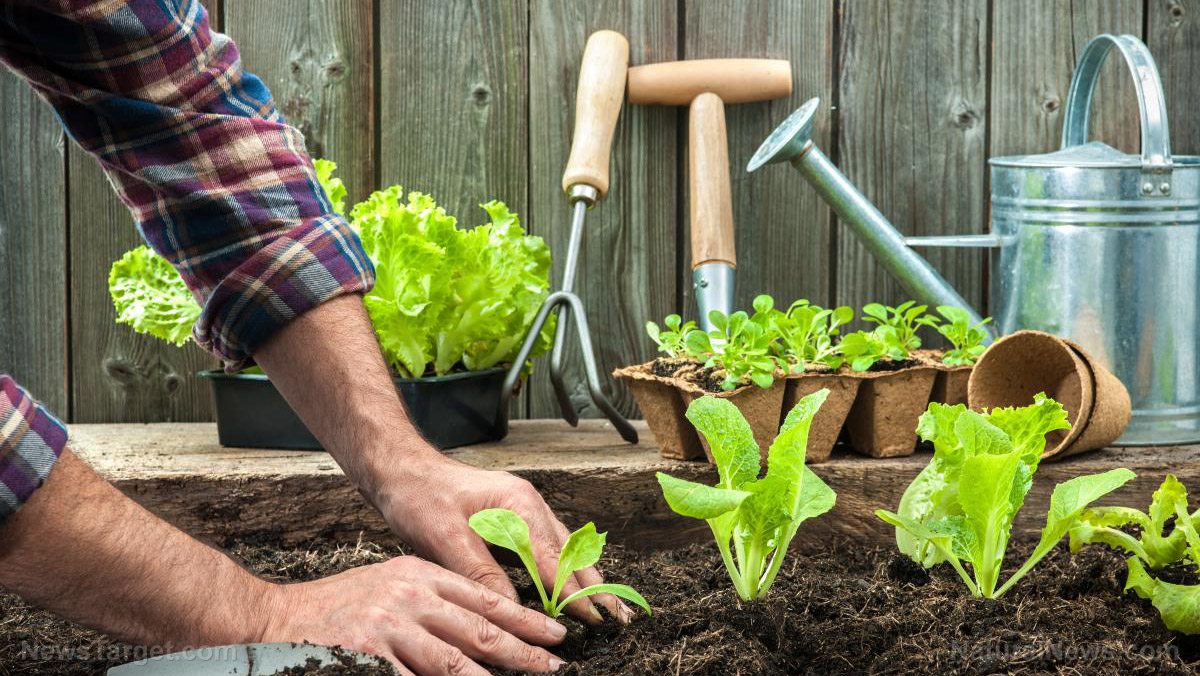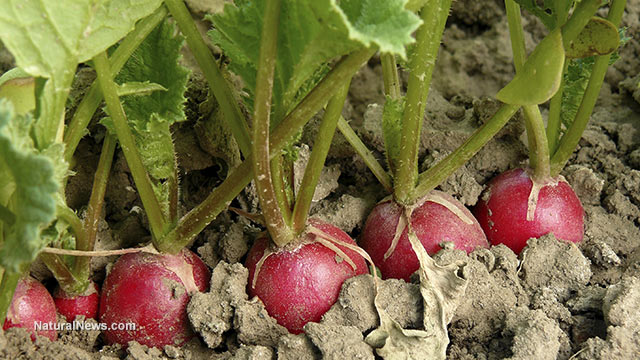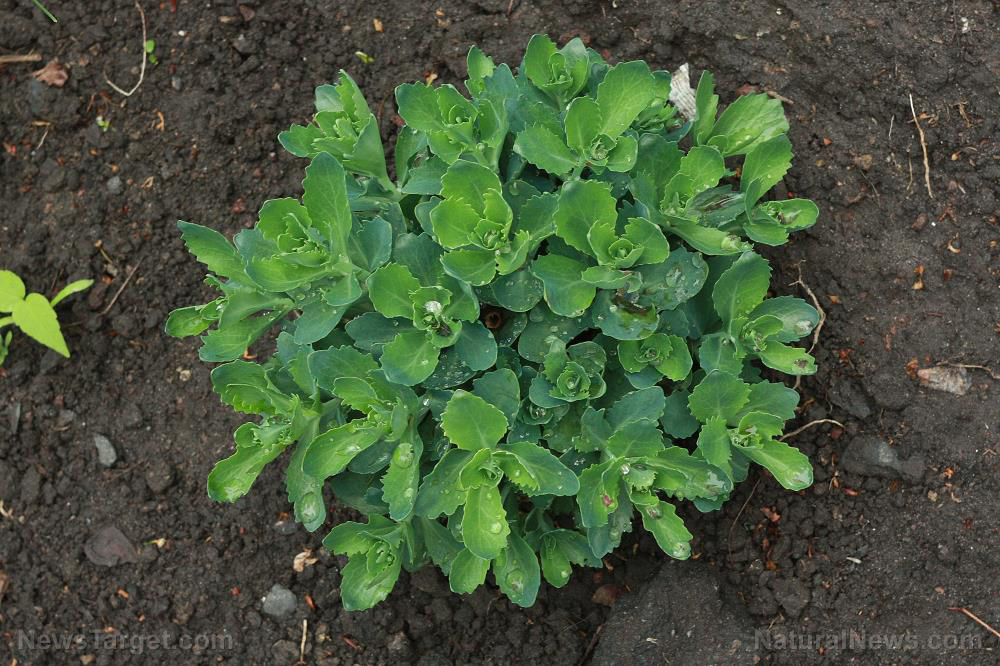
And while a lot of succulents are look striking, some of them are also edible, making them a great choice for preppers who want to start a garden on a balcony. (h/t to PreppersWill.com)
Ideally, a prepper should start a survival garden on their homestead. However, not everyone has the funds to live on a homestead.
If you don't have a backyard or you live in an apartment, you can still be self-sufficient by starting a garden right on your balcony. As a bonus, succulents require very little space and maintenance to grow.
Benefits of growing succulents
Aside from being a sustainable food source, succulents also offer these amazing benefits:
They can help maintain the proper percentage of humidity
Did you know that succulents are constantly moist? This can help reduce some common conditions and illnesses like colds, dry cough, dry skin, red eyes and sore throat.
Succulents also help add fresh, constant oxygen to your whole house or apartment.
But if you're allergic to latex, you might want to avoid succulents.
Most succulents aren't poisonous but some people can sometimes have allergies to plants like succulents. If you have a latex allergy, you should be careful when handling succulents that produce sap, such as those that are in the genus Euphorbia.
If you touch the sap of succulents, you might develop allergy symptoms like a rash.
They can help purify the air
Succulents can also help improve air quality. Some succulents can help get rid of toxic volatile organic compounds (VOCs) from the air because of their unique water evaporation process.
Purify the air inside your home or apartment by growing these succulents:
- Aloe vera
- Corn plant (Dracaena fragrans)
- Janet Craig (Dracaena fragrans)
- Red-edged dracaena (Dracaena marginata)
- Snake plant (Sansevieria trifasciata)
- Warneckii (Dracaena fragrans)
Succulents are versatile and you can eat them boiled or even raw.

6 Succulents to grow on your balcony
Here are six edible succulents that you can grow on your balcony if you're looking for a sustainable food source for a small space garden:
Aloe vera
Aloe vera can be used to naturally treat burns, scrapes, or cuts. According to studies, aloe vera contains more than 75 phytochemicals like antioxidants, folic acid and vitamins B1, B2, B6, C and E. (Related: Home gardening tips: 8 Small space gardening options that won’t break the bank.)
Note that consuming large amounts of aloe vera may be risky for your kidney health and can cause constipation, so eat it in moderation.
Aloe vera plants will thrive in USDA growing zone 9 through 11. If you don't live in these zones, grow aloe vera inside if conditions are similar to these zones. Aloe vera needs full sun for at least half a day.
Barrel cactus (Ferocactus wislizeni)
Barrel cactus fruit has edible black seeds and it is full of vitamin A and vitamin C. The seeds taste a bit like kiwi and lemon.
The seeds can also be eaten raw. Toast dried barrel cactus seeds lightly to enhance the flavor before eating. The seeds can also be ground into flour.
The yellow fruits on the crown of barrel cactus have a tough texture and sour taste. Pickle the fruits in brine or stew with sugar after removing the seeds inside.
The fleshy inner "meat" of barrel cactus can be sourced after burning off the spines and cutting open the body. The meat is crispy and spongy with a watery, slightly bitter taste. Prepare the meat by adding a bit of salt and sugar before eating.
You can also stew barrel cactus flesh in sugar syrup to make a chewy candy.
Like aloe vera, barrel cactus can be grown in the warm USDA zones of 9 to 11. Plant it in mostly sandy soil and place it in an area with full sun.
You can grow barrel cactus from seeds indoors and transplanted once it's large enough.
Dragon fruit (Hylocereus undatus)
Also called pitaya, dragon fruit has a mild flavor. Consume dragon fruit raw and sliced or add them to a fruit smoothie.
Dragon fruit is low in calories and high in protein. The fruit is a good source of dietary fiber, calcium, iron and vitamin C.
Dragon fruit grows best in USDA plant hardiness zone 10 or 11. If you live in zone 9, the plant will also survive with winter protection or grown in a greenhouse.
Pitaya thrives in warm weather but it does best in temperatures between 65 and 77 F. Anything over 100 F can cause damage to your plant.
Grow dragon fruit in rich soil that is mildly acidic. It needs about 30 percent light shade during the first four months after planting.
Provide support for your dragon fruit plant and irrigation twice per week during the growing season.
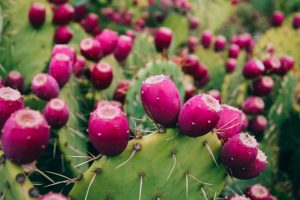
Nopales (Opuntia ficus-indica)
The oval-shaped, juicy fruit of nopales or prickly pear cactus is called Barbary fig, Indian fig and cactus pear.
Nopales leaves can be boiled or grilled. The leaves taste like green beans while the fruit tastes like watermelon. Nopales is full of calcium, dietary fiber and vitamin C but low in calories.
The fruit is eaten raw after peeling off the skin and running the inner portion through a food mill to separate the seeds. The sweet pulp of prickly pear can be used to make jams and jellies.
The pads are eaten raw in salads or cooked as a vegetable after removing the spines.
The tiny, hair-like glochids found at the base of the spines are harder to remove than the scary-looking spines on the plant. Carefully remove the glochids by burning them using a propane torch or by thoroughly washing the pads several times.
Once cleared of glochids, the pads can be cut into strips and boiled, grilled, pickled, stir-fried, or made into salsa.
Sea beans (Salicornia europaea)
Sea beans, also called sea asparagus, grow on salt marshlands and sandy seashores. They contain nutrients like calcium, iodine, iron and protein.
Sea beans can be eaten raw, boiled or fried, and they taste like asparagus.
Sea beans will thrive in a garden with enough care and space. Give the plant full sun and water it with a saline solution. Sea beans aren't hardy so treat them as an annual.
Stonecrops (Sedum species)
Red sedum leaves are bitter with a unique flavor but they can be consumed raw.
Meanwhile, yellow flowering sedums show mild toxicity so cook them before eating. They might cause stomach upset if eaten raw.
Stonecrops can help relieve coughs and also lower blood pressure. Like aloe vera, stonecrops can be used to treat burns, cuts, eczema and hemorrhoids.
You can grow stonecrop in USDA plant hardiness zones 3 to 9. Plant seeds in early spring in well-drained soil. Keep the plant in an area with full sun. Low-growing types will tolerate some shade.
If you don't want to plant seeds, use divisions. When planting a division, make sure the root ball is even with the soil surface.
Start a sustainable garden on your balcony and grow various edible succulents like aloe vera and prickly pear.
Sources include:
Please contact us for more information.
















